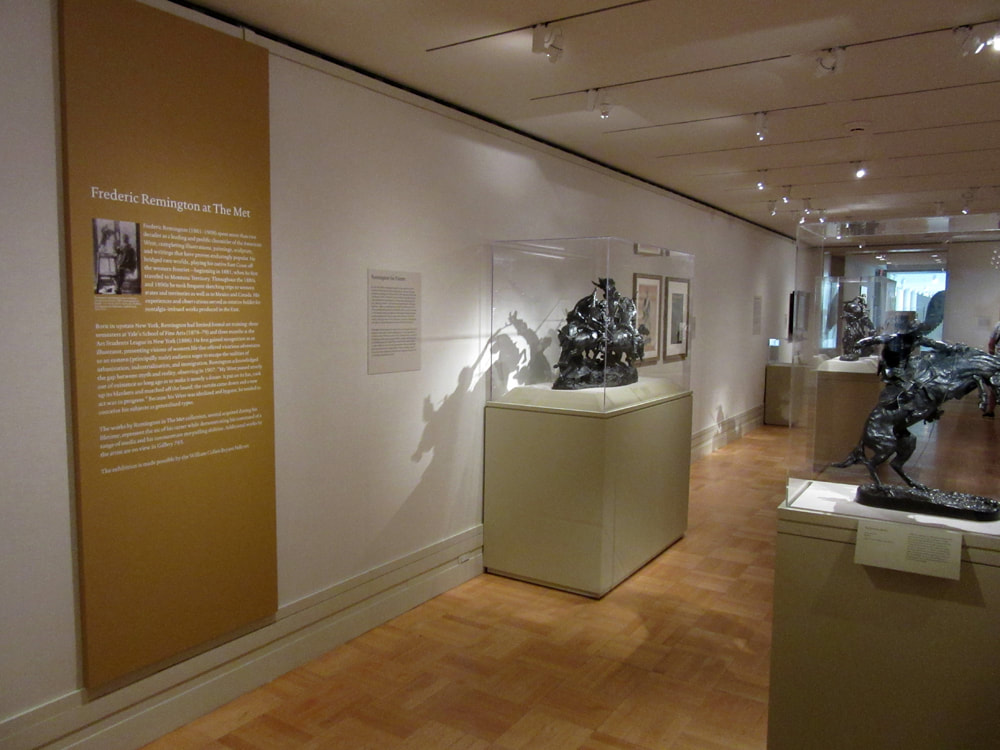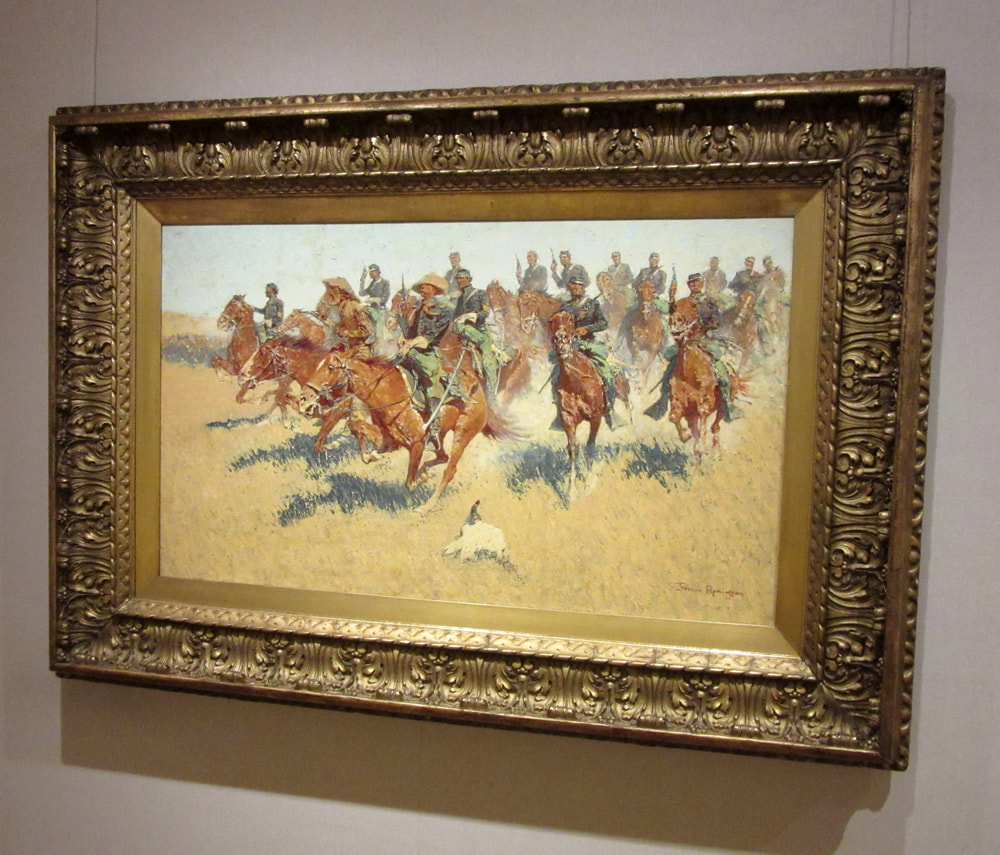|
“Frederic Remington at the Met” is a small, introductory exhibit presenting some 20 paintings, sculptures, works on paper and illustrated books relating to Remington. Although famous for his depictions of the Old West, the artist lived during much of his life in the New York City area. It is known that he came to the Metropolitan Museum (the "Met") to study works. In addition, several of his works came into the Met's collection during Remington's lifetime.
Frederic Remington was born in upstate New York. His father, who was a colonel in the Union Army during the Civil War, hoped that his son would follow a career in the military. However, when Frederic entered Yale in 1878, he choose to study art. More interested in playing football than studying, he left Yale after only three semesters. With the idea of investing the inheritance he received after his father's death in a mine or a ranch, Frederic set out for Montana in 1881. Although his investment plans did not pan out, it was an experience that would shape the rest of his life. Remington was captivated by the spirit of the Old West and sketched the cowboys, soldiers and Native Americans that he encountered. He would return to the West again and again throughout his career as a source of inspiration. Remington sold his first sketch to Harpers Weekly in 1882. This was the beginning of a successful career as an illustrator. In addition to numerous magazines, Remington would go on to illustrate books by Theodore Roosevelt and Owen Wister as well as Remington's own novels. Returning east, he moved to Brooklyn and to build his artistic skills enrolled for three months at the Art Students League of New York. He also studied works on display at the Metropolitan Museum, particularly those of the French academic painters. The exhibit gives a glimpse of Remington's work as an illustrator. There are examples of published works as well as one of his preliminary sketches made on the scene for a work that would be completed in the studio. However, the most interesting of these works are monochrome oil paintings. At first glance, these appear to be black and white photos of paintings. However, you quickly see that they are the original paintings. They were done in black and white to facilitate their reproduction in the magazines of the day. Remington was not satisfied with being an illustrator. At that time, illustration was considered a lesser form of art or, in some circles, not really art at all. In illustration, it was argued, the objective is to support the written words, the concept and inspiration thus coming from the writer rather than the mind of the illustrator. Moreover, illustration was viewed as too commonplace and too commercial. To achieve recognition as a serious artist, Remington began exhibiting paintings in 1887 and had his first solo exhibition in 1893. Although his works were popular, he remained somewhat dissatisfied and later in his life he burnt many of his early works. A highpoint of the exhibit is Remington's painting “On the Southern Plains.” One of Remington's later works, its color and style reflect the artist's movement away from French academic painting toward a more impressionistic style. It shows a group of cavalry soldiers, guns drawn riding to meet some unseen foe. They are not formed in a battle line like cavalry soldiers preparing to attack did in those days. Rather, they ride as a group of individuals - - very American. As throughout Remington's works, the people depicted are noble and engaged in a worthy pursuit. Whether that is a historically accurate portrayal of the Old West is irrelevant. Like a John Ford movie, it has a romantic, heroic appeal and that is good for the soul. In 1895, the sculptor Frederick Ruckstull taught Remington how to do sculpture. Remington went on to create some 22 different bronzes. The exhibit has several of them on display including his first statue, “The Bronco Buster.” Remington's statues are small rather than monumental. There are no busts of famous men. Rather, the statues are of the common people of the Old West. While the artists of the Hudson River School and other artists who depicted the frontier were interested in its wondrous landscapes, Remington was interested in people. And the bronzes depict people in action - - whether it is a cowboy on a bronco, a mountain man going down a steep slope or a Cheyenne warrior speeding along on a horse, there is motion in these statues. Tragically, Remington died at the age of 49 due to complications arsing from an appendectomy In those days, it was the fashion for successful men to overeat. As a result, the once lean athlete was some 300 pounds when he died. Moreover, health problems brought on by his weight prevented him from working outside the studio towards the end of his life - - something he very much desired to do as he became interested in the work of the Impressionists. Comments are closed.
|
AuthorRich Wagner is a writer, photographer and artist. Archives
November 2018
Categories
All
|


 RSS Feed
RSS Feed